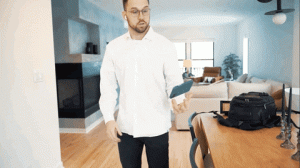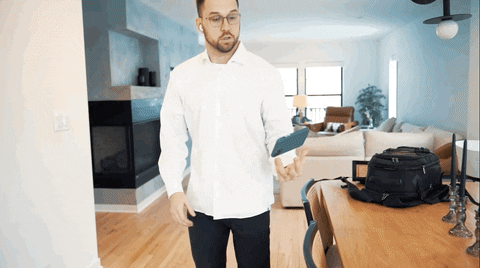
Hardwood floors have long been a symbol of elegance and durability in home design. Their natural beauty, warmth, and ability to increase property value make them a top choice for homeowners. However, many are discouraged by the high costs often associated with hardwood flooring. The good news? Installing hardwood on a budget is absolutely possible with the right approach, knowledge, and resources.
This comprehensive guide breaks down everything you need to know to install hardwood flooring cheaply without sacrificing quality or style.
1. Choosing Affordable Hardwood Options
Not all hardwood is created equal—some species and styles are far more affordable than others. Here are the most budget-friendly hardwood types:
Engineered Hardwood
-
Cost: $3–$7 per sq. ft.
-
Why it’s cheaper: Engineered hardwood uses a thin layer of hardwood on top and plywood underneath.
-
Best for: DIY installations, areas prone to humidity, or when working on concrete subfloors.
-
Pros: More stable, resistant to warping, often prefinished.
Domestic Woods
-
Oak: Widely available, starting around $3–$5 per sq. ft.
-
Maple: Slightly harder, $4–$6 per sq. ft.
-
Hickory: Rustic and durable, $4–$7 per sq. ft.
Prefinished Hardwood
-
Why it’s cheaper overall: Saves on labor and finishing costs.
-
Bonus: You can walk on it immediately after installation.
Reclaimed or Salvaged Wood
-
Where to find it: Salvage yards, Craigslist, Facebook Marketplace, Habitat for Humanity ReStores.
-
Price: As low as $1–$3 per sq. ft. (or even free).
-
Note: May require more prep work (nail removal, sanding).
2. Cost Breakdown: Hardwood Floor Installation
| Cost Component | DIY | Professional |
|---|---|---|
| Hardwood Material | $1–$7/sq. ft. | $1–$7/sq. ft. |
| Underlayment | $0.30–$0.70/sq. ft. | $0.30–$0.70/sq. ft. |
| Tools & Supplies | $100–$400 (one-time) | Included in labor |
| Labor | Free (DIY) | $3–$6/sq. ft. |
| Total Estimated Cost | $2–$8/sq. ft. | $6–$13/sq. ft. |
3. DIY Installation: Step-by-Step
Tools Needed
-
Tape measure
-
Chalk line
-
Nail gun (or glue for floating floors)
-
Pry bar
-
Table saw or circular saw
-
Hammer and nails
-
Rubber mallet
-
Tapping block
Step 1: Prep the Subfloor
-
Clean thoroughly, remove old flooring, staples, nails, etc.
-
Ensure it’s level and dry. Moisture barriers may be required.
-
Install underlayment if needed.
Step 2: Acclimate the Wood
-
Let the hardwood sit in the room for 3–7 days to adjust to temperature and humidity.
Step 3: Layout Planning
-
Plan the direction of the planks (usually along the length of the room).
-
Stagger the joints for a more natural look.
Step 4: Installation Methods
-
Nail Down: Best for solid wood and plywood subfloors.
-
Glue Down: Used for engineered hardwood or concrete subfloors.
-
Floating Floor: Ideal for DIYers, planks lock together and “float” over the subfloor.
Step 5: Cutting and Fitting
-
Cut boards to fit using a saw.
-
Leave a 1/4-inch expansion gap around the room edges.
Step 6: Finish Up
-
Install trim and baseboards to cover the gaps.
-
Clean thoroughly and enjoy your new floor!
4. Money-Saving Tips
Buy in Bulk or During Sales
-
Look for clearance sales or discontinued styles.
-
Purchase more than needed (10–15% extra) to account for waste.
Opt for Wide Planks
-
Covers more area with fewer boards = less installation time and material waste.
DIY Where Possible
-
Removing old flooring, prepping subfloor, and even doing the full install can save thousands.
Use Coupons and Cashback
-
Online retailers often offer discounts, rebates, or first-time buyer offers.
Combine with Other Renovations
-
If you’re already renovating, flooring can be added at a reduced cost during that process.
5. Maintenance Tips for Longevity
Protect Your Investment
-
Use felt pads on furniture.
-
Keep pet nails trimmed.
-
Avoid water pooling; clean spills immediately.
Cleaning Routine
-
Use a microfiber mop or hardwood-safe vacuum.
-
Avoid vinegar, ammonia, or steam mops.
-
Use pH-neutral hardwood floor cleaners.
Refinishing
-
Solid wood can be refinished multiple times.
-
Engineered wood can usually be refinished once (check the veneer thickness).
6. When to Hire a Pro
While DIY is cost-effective, hiring a professional may be worth it if:
-
Your subfloor needs extensive prep.
-
You’re installing in a complex space (like stairs).
-
You want a warranty-backed install.
-
You’re short on time or tools.
Conclusion
You don’t have to break the bank to enjoy the elegance and warmth of hardwood floors. With a little research, some elbow grease, and smart buying strategies, you can install quality hardwood flooring at a fraction of the typical cost.
Whether you opt for reclaimed wood, engineered planks, or domestic hardwoods, remember that proper installation and maintenance are key to ensuring your floors last for decades. So, roll up your sleeves and transform your home with beautiful hardwood—on a budget.
